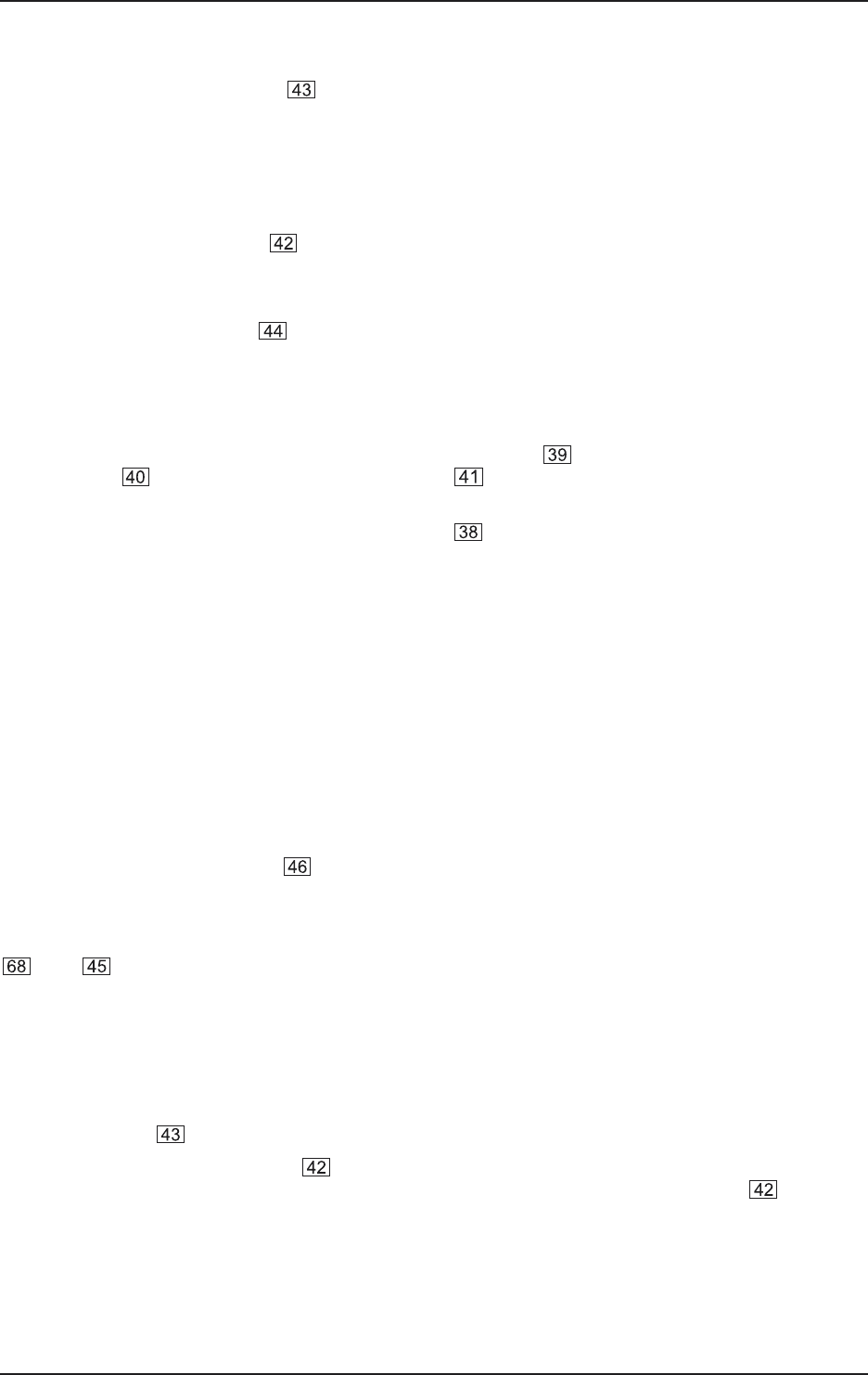
14
EURODESK MX2442A
6.2 Monitoring
Though most of you will want to audition the main mix most of the time there are exceptions. These include
SOLO/PFL and 2-TRACK playback . The bargraph meters follow whatever source is being auditioned (the
meters wont make much sense if more than one source is selected).
+ Altering what goes into the control room monitors does not affect the signal from the main mix
outputs. That offers to you the opportunity to do a quick SOLO during a mix whenever you
want without having to start again!
The MONITOR/CTRL LEVEL pot sets the level to the control room monitors. This is sourced post the main
mix stereo fader setting. Your fades couldnt be heard otherwise.
Dont rely on a single pair of loudspeakers to audition your mix. Youd better use a variety of different speakers.
Lastly, there is a MONO button , useful for checking the phase correlation and/or coherence of a stereo
signal. Again, this does not affect the main mix outputs.
6.3 Headphones
The headphones may be sourced from the monitor/control room mix , and/or the pre/post-fader switchable
aux sends 1/2 and/or the post-fader aux sends 3/4 . Two headphones sockets are provided on the
connector panel.
The headphone mix level is controlled by a LEVEL pot , and the gain is sufficient to drive headphones
directly. This is fine for a MIDI suite with overdub booth, but for the bigger studios headphone network using a
separate headphones distribution amplifier like the BEHRINGER POWERPLAY PRO HA4600 is recommended:
This allows independent level and EQ-settings for four headphone mixes; a total of 12 headphones can be
connected.
6.4 SOLO/PFL
SOLO
SOLO is short for Solo-in-Place, and is the preferred method for auditioning an isolated signal, or group of
signals. Whenever a SOLO button is pressed, all unselected channels are muted in the monitors. Stereo
panning is maintained. The SOLO bus is derived from the output of the channel pans, aux sends, stereo line
inputs and subgroups, and is always post-fader.
PFL
Pressing the channel mode switch once disengages the stereo solo bus, and replaces it with a separate
mono PFL (Pre-Fader Listen) bus. Now any channel which is solo-ed, isnt. It is PFL-ed instead. PFL should
always be used for gain-setting.
The channel mode (PFL or SOLO) is indicated by a pair of status LEDs (located below the bargraph meter
), pot controls the SOLO level, which will normally be set to unity gain (center detent) to match the in-
the-mix level.
6.5 2-Track In- and Output
2-track input
The 2-track input is on unbalanced RCA plugs, and is primarily made for auditioning mix playback from tape.
The 2-track switch routes this signal to the control room monitors.
With the MON/CTR LEVEL control fully clockwise, your 2-track input will be matched to the semi-
professional level -10 dBV. For higher output recording sources (e.g. +4 dBu) turn the level of down.
+ The 2-track input could usefully be connected to the output of a hi-fi pre-amp or integrated
amplifier, allowing you to easily audition a variety of sources (e.g. CD, phono etc.).
2-track output
A pair of balanced XLR and jack connectors deliver the main mix output to your 2-track recorder (or PA system)
at +4 dBu. Alternative RCA (-10 dBV) connectors are provided, too.
6. MAIN SECTION


















